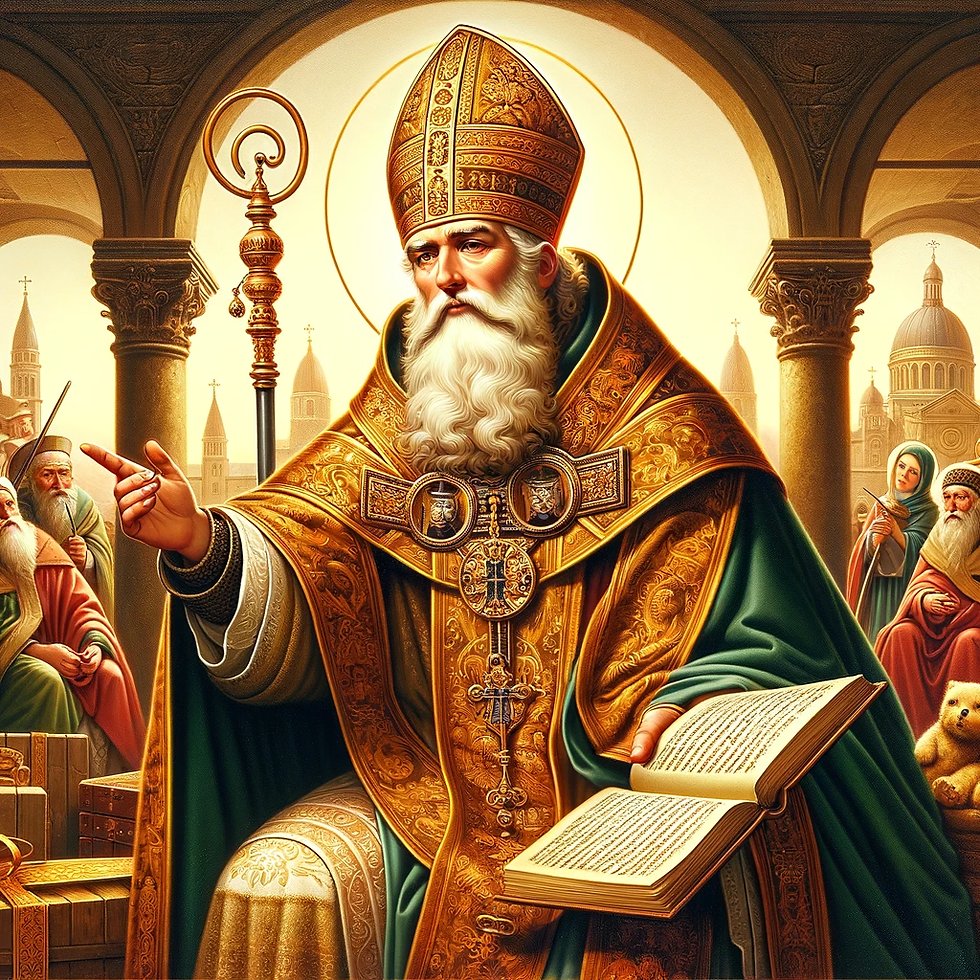The Origins of Christmas
- Marcelo Serafim
- Dec 13, 2023
- 3 min read
Updated: Dec 15, 2023
Christmas, a festive holiday celebrated on December 25, has evolved over centuries into a global phenomenon encompassing religious, cultural, and commercial elements. Its origins trace back to ancient winter solstice festivals and the Christian celebration of the birth of Jesus Christ.
Pagan Influences
The earliest influences of Christmas date back to pagan traditions surrounding the winter solstice, particularly in Europe. Celebrations like Saturnalia, a Roman festival honoring Saturn, the god of agriculture, and Yule, observed by Germanic peoples, featured feasting, merrymaking, and gift-giving, elements that later assimilated into Christmas traditions.
Christianization of Christmas
As Christianity spread across Europe, early Christians adopted and reinterpreted many pagan customs. December 25 was chosen to celebrate Jesus' birth, aligning with the solstice festivals and symbolizing the "Light of the World" coming into darkness.
Evolution of Santa Claus
Santa Claus, a central figure in modern Christmas lore, evolved from St. Nicholas, a 4th-century bishop known for his generosity. His legend grew over centuries, incorporating various cultural influences, including Dutch Sinterklaas and British Father Christmas.
Victorian Era and Santa's Image
The Victorian era significantly shaped Christmas traditions. Santa's modern image – a jolly, rotund man in a red suit – was popularized through poems like "A Visit from St. Nicholas" and illustrations by Thomas Nast in the 19th century.
Coca-Cola's Influence
In the 1930s, Coca-Cola commissioned illustrator Haddon Sundblom to create advertisements featuring Santa Claus. Sundblom's depictions, showcasing a cheerful, plump Santa in Coca-Cola's red and white colors, further solidified Santa's modern image and linked him to commercial aspects of Christmas.
Global Spread
Through globalization and commercialization, Christmas and Santa Claus became integral to holiday celebrations worldwide, transcending their religious origins. Santa's image, as popularized by Coca-Cola, became universally recognized.
Modern Celebrations
Today, Christmas is a mix of religious celebration, cultural festivity, and commercial enterprise. Santa Claus, as a symbol of gift-giving and merriment, plays a significant role in the holiday's commercial aspect.
Reflection on Commercialization
While Christmas retains its religious significance for many, the commercialization of the holiday, epitomized by Santa Claus and corporate influences like Coca-Cola, raises questions about the true spirit of the season.
Conclusion
The history of Christmas and Santa Claus is a tapestry woven from diverse cultural, religious, and commercial threads. This evolution, including the influence of companies like Coca-Cola, reflects the dynamic nature of cultural traditions and the interplay between commerce and festivity.
Questions
What pagan festivals influenced early Christmas traditions?
How did Christianity influence the celebration of Christmas?
Who was St. Nicholas, and how did he influence the image of Santa Claus?
What role did Coca-Cola play in shaping the modern image of Santa Claus?
How has globalization impacted the celebration of Christmas and Santa Claus?
How is Christmas typically celebrated in your country?
Vocabulary Section
Phenomenon - A remarkable or significant event or occurrence.
Assimilated - Absorbed or integrated into a wider culture or system.
Reinterpreted - Considered in a new or different light.
Epitomized - Represented perfectly or typically.
Tapestry - A complex combination or sequence of events.
Jolly - Happy and cheerful.
Rotund - Round or spherical in shape.
Transcending - Going beyond the limits of something.
Festivity - The celebration of something in a joyful and exuberant way.
Dynamic - Characterized by constant change, activity, or progress.
Phrasal Verb: "Light Up"
Meaning: To become or make something become bright with light; also used metaphorically to mean making someone feel happy or excited.
Examples:
The Christmas tree lights up the room with its colorful decorations.
Her face lit up when she saw Santa Claus.
American Idiom: "Deck the Halls"
Meaning: To decorate a room or building for Christmas.
Example: Every year, we deck the halls with lights, ornaments, and tinsel to celebrate the festive season.
English Grammar Tip: Dates
When referring to specific dates, the proper preposition to use is "on." For example, you would say "on December 25th" or "on my birthday." The preposition "on" is used for days and dates in English.
The meeting is scheduled on March 1st.
She was born on July 4th.
We will travel on the first day of the year.
Listening
Homework Proposal
Research and Presentation: Students are tasked to research how Christmas is celebrated in a different culture or country and prepare a presentation. The presentation should include traditional customs, food, and the role of Santa Claus or equivalent figures in those celebrations. This assignment encourages cultural awareness and understanding of global diversity in holiday traditions.








Comments